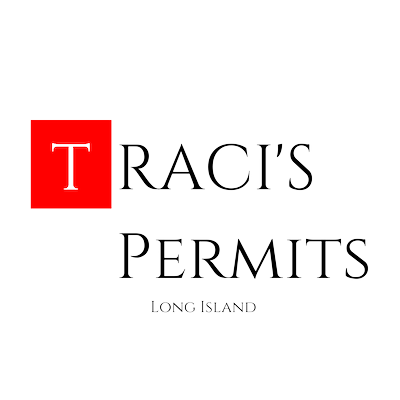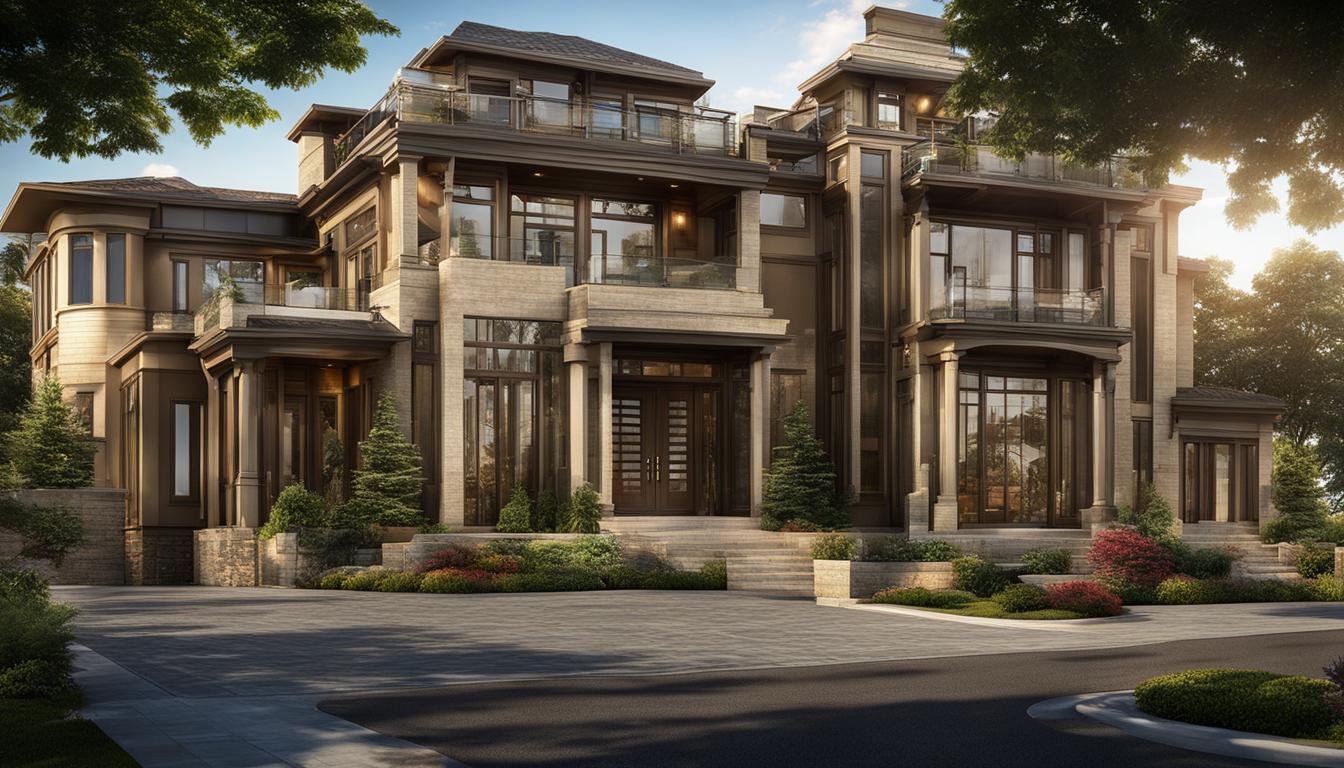Are you planning a construction project in Long Beach? Understanding the process for obtaining building permits, variances, radius maps, and a certificate of occupancy is crucial. These approvals ensure compliance with local regulations, guarantee the safety of occupants, and contribute to the successful completion of your project.
At TracisPermits.com, we specialize in efficiently securing all the necessary permits and documentation for your construction projects in Long Beach. With our fast and reliable service, you can focus on the construction itself while we handle the paperwork. Contact us today at 631-492-0927 to get building permits, variances, maps, and certificates of occupancy quickly and hassle-free.
Key Takeaways:
- Building permits are official approvals from the City of Long Beach that allow construction, alteration, demolition, or repair projects to proceed.
- Long Beach requires various types of permits, including building permits, electrical permits, plumbing permits, mechanical permits, and combination permits.
- Applicants must submit necessary documentation to the Building and Safety Bureau for review to obtain a building permit in Long Beach.
- Variances may be necessary for construction projects that deviate from zoning regulations and require review and approval.
- Radius maps play a crucial role in determining distances and complying with zoning requirements in Long Beach.
Types of Building Permits in Long Beach
When it comes to construction or modification projects in Long Beach, there are several types of building permits that may be required. Understanding these permits is essential for ensuring compliance with local regulations and ensuring a smooth construction process.
Firstly, there are building permits which are necessary for the construction or modification of a building or structure. These permits ensure that the project meets safety standards and code requirements. Electrical permits, on the other hand, are required for any electrical system installation or modification. This ensures that the electrical work is done safely and meets all relevant regulations.
In addition, plumbing permits are needed for plumbing system installations or modifications. These permits ensure that the plumbing work is done correctly to prevent issues such as leaks or improper drainage. Lastly, mechanical permits are required for heating, ventilation, refrigeration, air conditioning, and related systems. These permits ensure that these systems are installed properly and meet all necessary safety standards.
| Permit Type | Description |
|---|---|
| Building Permits | Required for construction or modification of a building or structure |
| Electrical Permits | Required for electrical system installation or modification |
| Plumbing Permits | Required for plumbing system installation or modification |
| Mechanical Permits | Required for heating, ventilation, refrigeration, air conditioning, and related systems |
Long Beach also offers combination permits which encompass all of these permit types. This can be beneficial for projects that involve multiple systems or areas of construction. It streamlines the permitting process and ensures that all necessary approvals are obtained.
By understanding the different types of building permits in Long Beach and their requirements, property owners and contractors can navigate the permit process more effectively and ensure that their projects are completed in compliance with local regulations.
Process for Obtaining Building Permits in Long Beach
Obtaining building permits in Long Beach is a crucial step in the construction process. It ensures that projects comply with local zoning and building regulations, promoting safety and adherence to standards. To successfully obtain a building permit, there are several steps that applicants need to follow:
Step 1: Documentation Submission
Applicants must begin by submitting the necessary documentation to the Building and Safety Bureau for review. This documentation typically includes detailed plans and specifications of the proposed construction project. The plans should outline the scope of work and provide information on materials, dimensions, and other relevant details.
Step 2: Review Process
Once the documentation is submitted, the Building and Safety Bureau will conduct a thorough review of the plans and specifications. This review is conducted to ensure that the proposed project complies with all applicable zoning and building regulations in Long Beach. If any issues or discrepancies are identified, the applicant may be required to make revisions or provide additional information.
Step 3: Approval and Permit Issuance
Upon successful completion of the review process and compliance with all regulations, the building permit will be issued. This permit grants permission to proceed with the construction, alteration, demolition, or repair work outlined in the plans. It is important to note that the issuance of the building permit does not exempt the applicant from any other requirements or inspections that may be necessary throughout the construction process.
| Step | Description |
|---|---|
| 1 | Documentation Submission |
| 2 | Review Process |
| 3 | Approval and Permit Issuance |
It is important to note that the process for obtaining building permits may vary depending on the specific nature of the project and any additional requirements that may apply. Applicants are encouraged to consult with the Building and Safety Bureau or seek professional assistance to ensure a smooth and successful permit application process.
Importance of Variances in Long Beach Construction Projects
When it comes to construction projects in Long Beach, variances play a crucial role. A variance allows for deviations from specific zoning regulations, providing flexibility to property owners and contractors. It is an important tool for navigating the legal framework and ensuring that construction plans align with the unique needs of each project.
Obtaining a variance in Long Beach is essential when a construction project does not meet the standard requirements set by local regulations. This could be due to various reasons such as property size, location, or design constraints. By obtaining a variance, property owners can move forward with their plans while still adhering to the intent and purpose of zoning regulations.
“Variances provide an opportunity for property owners to innovate and find creative solutions that may not fit within the strict confines of standard regulations,” says John Smith, a local architect who specializes in Long Beach construction projects.
The process for obtaining a variance involves submitting an application to the appropriate authorities, typically the Long Beach Zoning Board of Appeals. This application should include a detailed explanation of the need for the variance and how it aligns with the overall goals of the community. The authorities will review the application and consider factors such as the impact on neighboring properties, public safety, and the overall character of the area.
By allowing for variances, Long Beach recognizes the importance of balancing the needs of property owners while maintaining the integrity of the community. It encourages innovation, flexibility, and progress without compromising on safety or the overall well-being of residents. Variances are a valuable tool in the construction process and contribute to the vibrant and diverse character of Long Beach.
Table: Example of Variances in Long Beach Construction Projects
| Type of Variance | Reason for Deviation | Impact on Project |
|---|---|---|
| Setback Variance | Unique property configuration | Allows for optimal use of available space |
| Height Variance | Preserving views or architectural design | Enhances aesthetic appeal and property value |
| Use Variance | Non-conforming property use | Allows for adaptive reuse and economic viability |
Table: Examples of variances commonly sought in Long Beach construction projects, highlighting the reasons for deviations and the positive impact on the overall project.
Utilizing Radius Maps in Long Beach
Radius maps play a crucial role in the planning and development process in Long Beach. These maps are essential for determining distances and proximity to various features and facilities within the city. Whether you are a property owner, contractor, or developer, understanding how to utilize radius maps can help ensure compliance with zoning regulations and make informed decisions about your construction projects.
With radius maps, you can accurately measure setbacks, identify zoning requirements, and assess the proximity of your project to protected areas or vital amenities. These maps provide valuable information that enables you to navigate the approval process for building permits and variances in Long Beach.
For example, if your project is in close proximity to a school, a radius map can help you determine if there are any specific restrictions or requirements that need to be considered. Similarly, when applying for a building permit, radius maps can assist in determining the appropriate distance to neighboring structures, ensuring compliance with city regulations.
By utilizing radius maps, you can streamline the permit application process, demonstrate compliance with zoning requirements, and foster successful construction projects in Long Beach.
Table: Benefits of Utilizing Radius Maps in Long Beach
| Benefits | Description |
|---|---|
| Accurate Measurement | Radius maps provide precise calculations for setbacks, zoning requirements, and distances to protected areas or amenities. |
| Compliance with Regulations | Using radius maps ensures adherence to city regulations and helps avoid potential permit delays or violations. |
| Efficient Planning | Radius maps assist in making informed decisions about project locations, identifying potential challenges, and optimizing construction plans. |
| Streamlined Permit Process | By utilizing radius maps, you can provide accurate documentation and demonstrate compliance, expediting the permit approval process. |
| Enhanced Risk Management | By understanding the proximity of your project to neighboring structures or protected areas, you can manage risk and ensure safer construction. |
Obtaining a Certificate of Occupancy in Long Beach
A certificate of occupancy is a crucial document that certifies a building or structure’s compliance with all applicable codes and regulations, ensuring it is safe for occupancy. In Long Beach, obtaining a certificate of occupancy requires thorough inspections to verify that the building meets all standards and requirements. These inspections cover aspects such as construction permits, land use permits, and other relevant permits.
Ensuring compliance with construction permits is a vital part of obtaining a certificate of occupancy. Construction permits are necessary for various building projects in Long Beach and are granted after careful review of plans and specifications. The permit ensures that the construction work aligns with local building codes and regulations.
Land use permits are also integral to obtaining a certificate of occupancy. These permits are issued by the City of Long Beach to ensure that the land or property is being used in compliance with zoning regulations. It verifies that the structure being occupied is suitable for its intended purpose and meets all necessary requirements.
Table: Certificate of Occupancy Requirements in Long Beach
| Permit | Description |
|---|---|
| Construction Permit | Required for the construction, alteration, or repair of a building or structure |
| Land Use Permit | Ensures compliance with zoning regulations and intended use of the property |
| Other Relevant Permits | Includes permits specific to the project, such as plumbing permits or electrical permits |
By fulfilling all necessary requirements and obtaining the required permits, property owners and contractors in Long Beach can successfully obtain a certificate of occupancy. This milestone signifies that the building or structure is in compliance with all regulations and can be safely occupied.
Contact TracisPermits.com at 631-492-0927 for fast and reliable service in securing building permits, variances, radius maps, and certificates of occupancy in Long Beach.
Conclusion
Navigating the process of obtaining building permits, variances, radius maps, and a certificate of occupancy in Long Beach can be complex. It is essential to understand the types of permits required, the process for obtaining them, and the importance of compliance with zoning and building regulations. By following the necessary steps and working with the appropriate authorities, property owners and contractors can ensure a smooth and successful construction project in Long Beach.
Compliance with local regulations is crucial to avoid delays and penalties during construction projects in Long Beach. Building permits, variances, and radius maps help ensure that projects adhere to zoning and building requirements. Additionally, obtaining a certificate of occupancy is a significant milestone, as it confirms that the building is safe for occupancy and complies with all applicable codes and regulations.
TracisPermits.com offers fast and reliable service for securing building permits, variances, radius maps, and certificates of occupancy in Long Beach. If you need assistance with your construction project, contact TracisPermits.com at 631-492-0927. Their team of experts can help expedite the permit acquisition process, ensuring a seamless experience for your building project in Long Beach.
FAQ
What is a building permit?
A building permit is an official approval from the City of Long Beach that allows property owners or contractors to proceed with construction, alteration, demolition, or repair projects. It ensures compliance with local zoning and building regulations and ensures the safety of occupants.
What types of permits are required in Long Beach?
The most common types of permits required in Long Beach are building permits, electrical permits, plumbing permits, mechanical permits, and combination permits. Minor installations, repairs, or replacements may be exempt from obtaining a permit. A certificate of occupancy is required for the completion of a project.
How do I obtain a building permit in Long Beach?
To obtain a building permit in Long Beach, applicants must submit the necessary documentation, including plans and specifications, to the Building and Safety Bureau for review. The project will be assessed for compliance with zoning and building regulations. Once approved, the permit will be issued, allowing the construction, alteration, demolition, or repair work to commence.
What is a variance and when is it required?
A variance allows for deviations from specific zoning regulations if compliance would cause undue hardship or practical difficulties. It is necessary to obtain a variance before proceeding with any construction that does not meet the standard requirements. Variances are subject to review and approval by the appropriate authorities.
How are radius maps used in Long Beach?
Radius maps are used in the planning and development process in Long Beach to determine distances for various purposes, such as measuring setbacks, determining zoning requirements, and identifying proximity to protected areas or facilities. They are typically used when applying for building permits to ensure compliance with the city’s regulations related to distances and boundaries.
What is a certificate of occupancy and how do I obtain one in Long Beach?
A certificate of occupancy is a document that certifies that a building or structure is in compliance with all applicable codes and regulations and is safe for occupancy. In Long Beach, obtaining a certificate of occupancy typically requires inspections to ensure that the building meets all standards. This includes verifying compliance with construction permits, land use permits, and other relevant permits.









